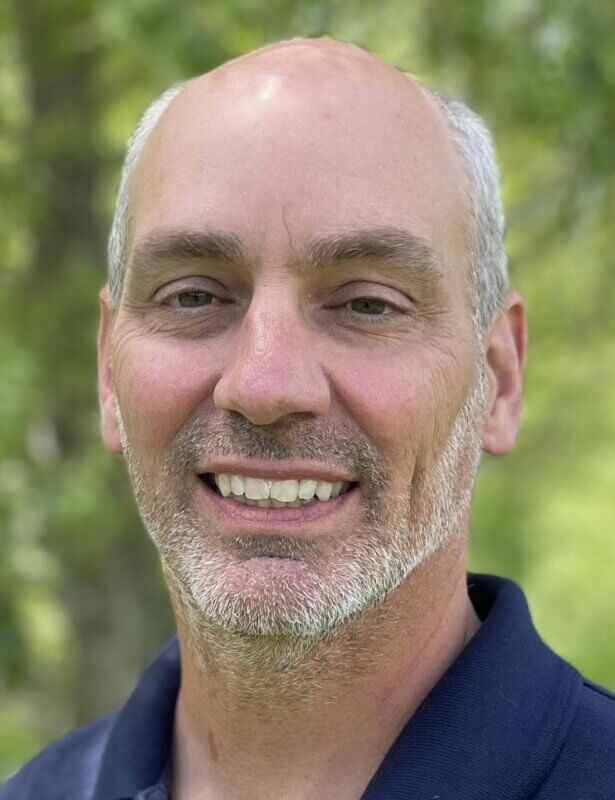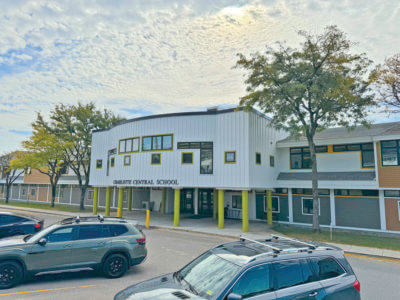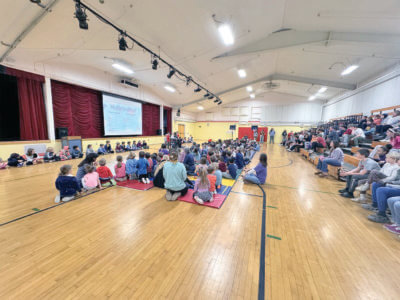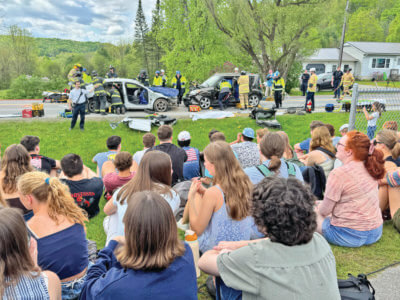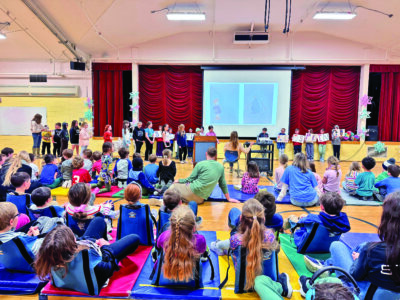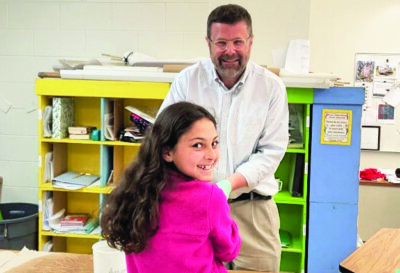Charlotte Central School predicted to grow by 50 kids
A demographic report on the Champlain Valley School District is predicting some abracadabra-type growth at Charlotte Central School.
Richard Grip, who works in school demography for Statistical Forecasting, a firm based in Dorset, came with five- and 10-year predictions to the school board meeting on May 17.
Among the prognostications Grip shared was his firm prediction that the Charlotte school will grow by 50 students over the next five years.
This mystified chief operations officer Jeanne Jensen.
“The numbers in Charlotte are really puzzling. They show growth with no new housing and a flat birth rate,” Jensen said. “I’m not really sure how we’re getting 50 kids. That’s magic somehow.”
In an email after the meeting, Jensen said the demographer attributes the growth entirely to in-migration, the turnover of existing housing.
The good news for Charlotte Central School is that, unlike Hinesburg Community School and Allen Brook School, it has room to grow.
“We have the capacity at Charlotte Central for this kind of growth, so we won’t need to take action ahead of seeing if it’s real,” she said.
Hinesburg and Allen Brook are projected to have more growth than those buildings can contain in the not-so-distant future and this will be something the school system will have to figure out, Jensen said.
There’s no way the Allen Brook School building will hold the 40 new students predicted for that school, she said.
Ironically, Shelburne Community School is experiencing a good bit of construction, but that school’s predicted growth is flat.
Grip admitted his firm’s 10-year predictions for middle and high school student numbers are easier. The 10-year predictions for elementary school students are slipperier because those predictions concern students who haven’t even been born yet. This introduces more chances for error.
Board member Lynn Jaunich of Charlotte wanted to know what the CVSD school system should do to avoid ending up in a situation like South Burlington where there has been so much growth that the schools are out of capacity.
Part of the problem: “You’re a victim somewhat of your own success,” Grip said.
He said the school system is so good that families are moving into the area so their children can attend schools in the district.
“It’s not cheap to be there, so it’s not cheap housing that’s driving people there,” Grip said. “It’s other factors and education is probably No. 1.”
Overwhelmed support staff
“What we experience in our school mirrors what’s happening in our community,” Charlotte Central School co-principal Jenn Roth said in a report from middle school administrators around the district.
Roth said there’s not enough mental health resources for families in this emotionally and psychologically tough time. Parents and educators are feeling overwhelmed by the lingering societal and educational impacts of the pandemic and the ensuing quarantine-induced remote schooling.
Schools are feeling an acute need to have people in the classrooms supporting students, she said.
People working as counselors, the school assistance program and the school service clinicians at Charlotte Central School “are amazing — and they are absolutely overtaxed,” Roth said. “We’re all trying to find solutions to keep our students safe and our families safe.”
Academic return on investment project
Some of the district administrators involved in an “academic return on investment” project gave a report on that project. The educators involved are required to work on a project in the school system, and they chose to look into how well the Champlain Valley School District’s middle school configuration is preparing students for success in high school, Jensen said.
Some characteristics of the district’s middle school configuration are that all the classes have about 18-20 students, and all of those schools have about the same budget for middle school-aged children.
Charlotte Central School and Hinesburg Community School are the only schools that don’t have looping in the fifth and sixth grades. Both those schools do loop in the seventh and eighth grades.
Looping in education is the practice of having students stay with the same teacher for two or more years. The intent of the practice is to give students a more stable learning environment.
By looking at individual high school students who are doing very well, not doing well or doing OK, the hope is to track them back through middle school to see what middle school configurations have worked well or not, Jensen said.
“The intent is to see if anything makes a difference or perhaps it doesn’t,” Jensen said, adding that it’s also important for the study to determine what the costs of various configurations are.
One of the biggest parts of the project is determining what student success is and how to measure it, Superintendent Rene Sanchez said.
Related Stories
Popular Stories
If you enjoy The Charlotte News, please consider making a donation. Your gift will help us produce more stories like this. The majority of our budget comes from charitable contributions. Your gift helps sustain The Charlotte News, keeping it a free service for everyone in town. Thank you.
Bill Regan, Chair, Board of Directors
